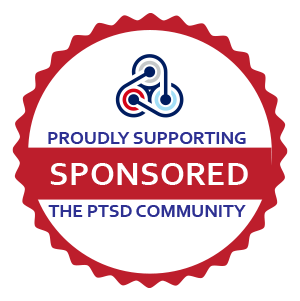Relief from Headache Pain in San Diego
San Diego: Get Relief from your Headache Pain

Headaches are one of the most common pain conditions in the world, and nearly everyone in San Diego has experienced a headache at some point in their lives. Head pain can be incredibly disabling, causing work and school absenteeism, poor sleep and loss of ability to exercise or perform daily activities. And for people who experience chronic headache disorders, living with constant or near-constant pain can lead to anxiety and depression.
Keep reading to learn more about common types of headaches.

Identifying the Different Types of Headaches
Headaches are classified into two main types: primary headaches and secondary headaches. Primary headaches aren’t caused by a medical condition — the headache is the primary condition. Secondary headaches are caused by an underlying condition — the headache is a symptom of something else. There are over 150 different types of headaches. Below is a listing of some of the most common types in San Diego.
Primary Headaches
- Tension headaches. Tension-type headaches cause dull, aching pain and pressure around your entire head. You may also feel sensitivity around your face, neck and shoulder muscles. The pain can range from mild to severe, and a headache could last anywhere from 30 minutes to several hours. Tension-type headaches are the most common form of primary headache, but the causes are still relatively misunderstood. Stress is believed to be the main trigger for tension headaches.
- Migraine headaches. Migraine headaches cause intense throbbing, pulsing pain on one side of the head. Head pain is usually accompanied by other symptoms like nausea, vomiting, and sensitivity to light, sound and smell. Some people also experience a warning sign known as an aura before a headache begins. An aura causes disturbances like flashing lights, blind spots, numbness, tingling, muscle weakness or difficulty speaking that precedes the onset of a migraine. Migraines can last anywhere from several hours to several days, and the pain can be disabling, preventing you from working, performing daily activities or even moving at all. The causes of migraines aren’t fully understood, but genetics and nervous system disorders appear to play a role. A migraine headache can be triggered by abnormal sleep, stress, hormonal changes, certain foods and drinks, medications, fasting and dehydration. Everyone’s triggers are different.
- Cluster headaches. Cluster headaches cause sharp, burning, piercing pain around one eye and side of the face. The pain is usually accompanied by other symptoms like eye tearing and redness, swelling, a drooping eyelid, paleness or flushing, sweating and nasal congestion on the affected side. Headaches occur in cluster periods, which are groups of frequent, painful attacks that last anywhere from fifteen minutes to three hours. You may have up to eight or more individual headaches a day in a cluster period. These series of daily headaches can continue for weeks or even months before the headaches stop. Once they end, you may be in remission for months or years before experiencing cluster headaches again. Cluster headaches often begin without warning — sometimes in the middle of the night — and can be crippling in severity. During cluster periods, many people live in constant anxiety not knowing when the next attack is coming. Scientists don’t know the exact cause of cluster headaches and they’re usually not triggered by anything.
- Hemicrania continua. Hemicrania continua headaches cause constant, daily pain on one side of the face. The pain is usually accompanied by other symptoms like eye tearing and redness, swelling, a drooping eyelid, paleness or flushing, sweating and nasal congestion on the affected side. Most people experience pain that remains at a consistent level broken up by sharp episodes of more severe pain. Hemicrania continua is rare and not well studied, so scientists don’t know exactly what causes this disorder.
- New daily persistent headaches (NDPH). New daily persistent headaches cause a pressing, tight pain on both sides of the head. You may also experience tension-type or migraine symptoms. As implied by the name, new daily persistent headaches occur daily or almost every day. They often begin without warning in people who have no prior history of headaches. Many people remember the exact day and time persistent headaches began. Scientists don’t know the exact cause of new daily persistent headaches. An infection, illness, surgery or stressful event can trigger the onset of headaches.
Secondary Headaches
- Sinus headaches. Sinus headaches are caused by a sinus infection, an allergic reaction or seasonal allergies. A dull, throbbing pain occurs around the cheeks, eyes and forehead.
- Medication overuse headaches. These headaches are caused by overuse of over-the-counter or prescription painkillers to treat a pre-existing headache disorder. You may be susceptible to this type of headache if you take a pain reliever for 15 or more days of the month. Head pain usually occurs daily and is present upon waking. It may ease after you take pain medications, but return once the medication wears off.
- Post-traumatic headaches. Post-traumatic headaches are caused by a head injury like a concussion or a bump to the head. Post-concussion headaches can last for several weeks or months after the original injury. Symptoms may be similar to migraine or tension headaches.
- Spinal headaches. Spinal headaches occur when spinal fluid leaks out through the membrane surrounding the spinal cord. They occur most frequently following a procedure like a spinal tap, spinal anesthesia or epidural block. Spinal headaches are usually dull, throbbing, and worsen when you sit up or stand. You may experience pain relief when you lie down. Most spinal headaches resolve on their own within a few days to a few weeks.
There are several other types of headaches that present as a symptom of something else, including: hangovers, caffeine headaches (from heavy consumption or sudden withdrawal), hormone headaches (also called menstruation headaches), exertion headaches, high blood pressure headaches, infections and tumors.
Can Headaches Become a Chronic Condition?
Chronic daily headaches is the term used to describe headaches that occur at least fifteen days of the month for more than three months. Under the umbrella term chronic daily headaches, there are multiple subtypes of headaches that can become long-lasting. The most common chronic headache conditions include:
- Chronic migraines
- Chronic tension headaches
- Chronic cluster headaches
- Hemicrania continua
- New persistent daily headaches
- Medication overuse headaches
- Post-traumatic headaches (post-concussion headaches can continue for several months or even years)
The daily or near daily pain from chronic headaches can be quite disabling, preventing you from concentrating at work, playing sports or exercising, enjoying social events or sleeping well.
When is it time to see a doctor for headaches? Occasional head pain is normal, but seek medical care for the following:
- You have headaches that occur more than twice a week
- You take pain relievers daily or most days for headaches
- You have head pain that affects your quality of life and ability to perform daily activities
- Your headaches are occurring more frequently or worsening each time
The above signs may be an indication that you have a chronic headache disorder.
Treatment Options
If you have a secondary headache disorder, treatment focuses on treating the underlying condition. For example, medication overuse headaches typically resolve once you quit taking pain medications. If you have a primary headache disorder or chronic daily headaches, treatment focuses on reducing pain, avoiding triggers and slowing the frequency and severity of headaches.
You and your doctor will work together to create a personalized treatment plan for your headaches. You may need to try several approaches before you find a solution or a combination of treatments that works. Your treatment plan may include:
- Medications
- Knowing and avoiding triggers
- Stress management techniques (like meditation and deep breathing)
- Biofeedback
- Cognitive behavioral therapy (CBT)
All chronic conditions — including chronic headache disorders — are complex and difficult to treat, and some conditions don’t respond well to treatment. If you’re living with chronic head pain that’s affecting your quality of life, you may be a candidate for scrambler therapy.
Is Scrambler Therapy Effective for Chronic Headaches?
Treatments like scrambler therapy are changing the way chronic pain is understood and treated. Scrambler therapy is a non-invasive, non-drug therapy that provides long-lasting relief for chronic pain conditions. The treatment uses electrostimulation to send rapidly changing non-pain, non-harm messages along the same nerve fibers currently sending pain signals to the brain. Over the course of several treatment sessions, the brain comes to accept the non-pain messages as the dominant signal, overriding the pain signals. Scrambler therapy is built upon the idea that the brain is neuroplastic: the human brain can adapt, change and retrain itself in response to changing circumstances and stimuli.
Scrambler therapy has proven effective for providing long-lasting pain relief for chronic conditions that are resistant to other treatment methods. Treatment sessions are very safe and there are no reported side effects. It’s a safe treatment alternative to strong medications and invasive procedures and surgeries.
Radiant Pain Relief Centres Treats Chronic Pain Conditions
Radiant Pain Relief Centres exclusively uses scrambler therapy for the treatment of chronic pain. Because we have focused completely on this type of treatment, we’ve developed a level of expertise you won’t be able to find anywhere else. On average, our patients experience an 84% reduction in pain, and more than 90% of our patients conclude therapy with a pain score of zero or near zero.
We have a start-to-finish comprehensive care model, payment plans and financing options that make scrambler therapy accessible and affordable for everyone with chronic pain. We offer a free evaluation and free scrambler therapy session so that you can make an informed decision on whether or not this treatment is right for you before you invest.
If you’re living with chronic pain that’s decreasing your quality of life, please call us today at 503-405-8605 or submit a contact form for more information.

